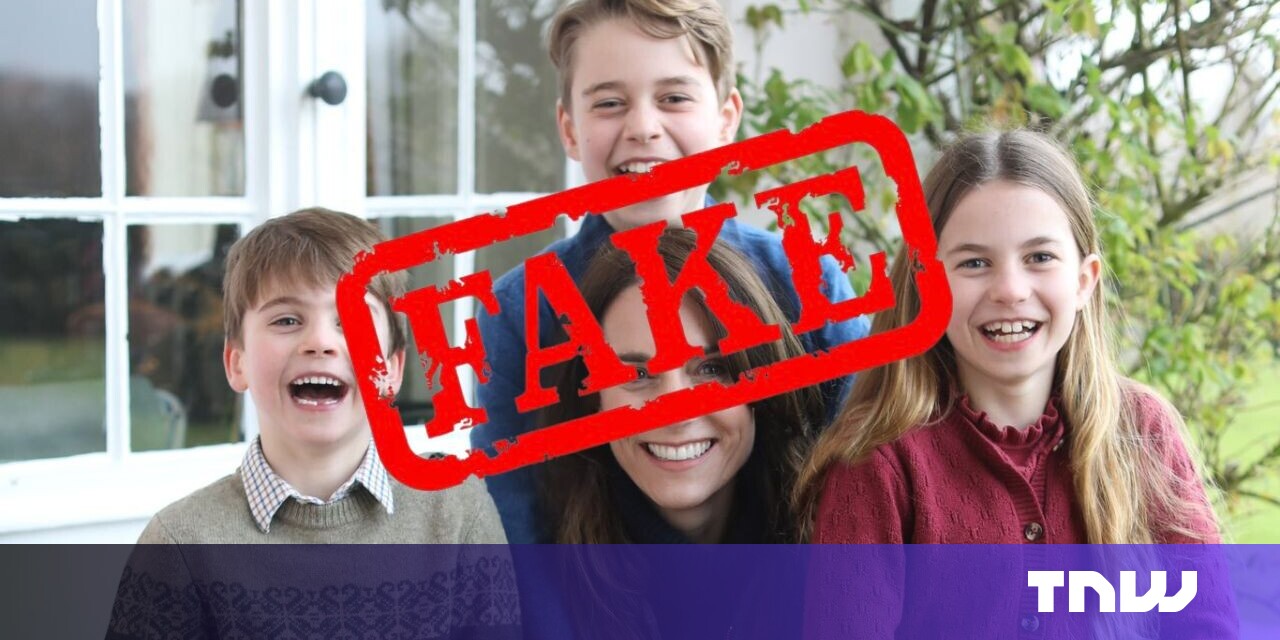#Princess Kate photo scandal triggers calls for watermarking images

Table of Contents

The pleas come after a picture of Princess Kate intensified wild rumours about her whereabouts.
Kate’s representatives issued the image this week to subdue gossip about her recent absence from the public eye. Newspapers and websites promptly plastered the snapshot across their pages. But the photo only heightened the speculation.
Online sleuths soon spotted clear signs of manipulation. One of Kate’s hands, they noticed, was peculiarly blurred. Her daughter’s jumper was missing a portion of the cuff. Her son’s fingers had an unnatural position.
TNW Conference 2024 – Group ticket offer
Save up to 40% with our Group offer and join Europe’s leading tech festival in June!
News agencies including Reuters, Associated Press, and AFP quickly reviewed the evidence. They withdrew the photos from circulation the same day.
The royal family was next to act. A statement ostensibly from Princess Kate apologised for “any confusion” and admitted to editing the pic.
Yet these responses only encouraged the conspiracy theorists. They speculated that Kate had died or — even worse — abdicated.
All the uproar has sharpened the sense of chaos surrounding the monarchy. It’s also strengthened the case for image authentication.
The watermarking guarantee
A leading advocate for watermarks is James Davenport, a professor of IT at Bath University and a fellow at the British Computer Society (BCS). He wants to stamp unedited photos as “guaranteed originals.”
Thank you for your kind wishes and continued support over the last two months.
Wishing everyone a Happy Mother’s Day. C
📸 The Prince of Wales, 2024 pic.twitter.com/6DywGBpLLQ
— The Prince and Princess of Wales (@KensingtonRoyal) March 10, 2024
Watermarking digital images as untouched, Davenport says, would assure media agencies and the public. It could also be far simpler than watermarking AI-generated content — an approach attracting growing support.
The difference, Davenport told TNW, stems from motivation.
Watermarking AI has problems
For photos, cameras and phones would need signature systems to authenticate images. Photographers and rights-holders would then apply the stamps to their pictures. As a result, news organisations could warn their audiences when a picture isn’t rubber-stamped.
On a technical level, the approach resembles digital signatures on documents. It would rely on mutual trust to succeed, but each party has good reasons to cooperate. If they didn’t, their photos would become less trusted.
Watermarking AI, by contrast, would require people motivated by deception to always do the right thing. Bad actors won’t sign up and can already evade the stamps that others add.
“There is much talk about ‘watermarking AI’, but this is probably impractical, and certainly impossible to enforce — the genie is well and truly out of the bottle,” Davenport said.
“What is really needed is watermarking ‘guaranteed originals,’ which is certainly technically possible.”
One of the themes of this year’s TNW Conference is Ren-AI-ssance: The AI-Powered Rebirth. If you want to go deeper into all things artificial intelligence, or simply experience the event (and say hi to our editorial team), we’ve got something special for our loyal readers. Use the code TNWXMEDIA at checkout to get 30% off your business pass, investor pass or startup packages (Bootstrap & Scaleup).
If you liked the article, do not forget to share it with your friends. Follow us on Google News too, click on the star and choose us from your favorites.
If you want to read more like this article, you can visit our Technology category.




